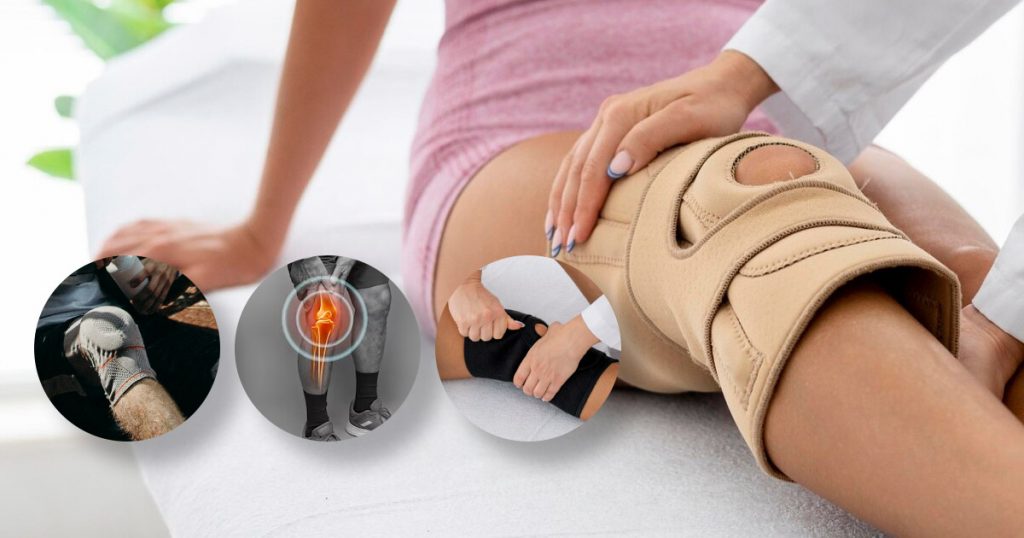Knee braces are devices made to support and protect your knees. They can look like easy-to-wear sleeves that slide over your knee or sturdier designs with hinges and straps for more control and stability. They’re usually made of stretchy materials like neoprene, along with stronger materials like plastic or metal for extra support.
People use knee braces for all sorts of reasons—whether it’s recovering from an injury, easing everyday pain, or preventing knee problems while playing sports. They can help keep your knees stable, reduce discomfort, and even protect against further injury. For example, a study from The Clinical Journal of Sport Medicine showed that wearing a knee brace can help lower the risk of serious ACL injuries in athletes who do activities like jumping or running. Braces also make moving around easier by keeping your knee in the right position, helping you feel more confident and secure.
Why Choosing the Right Knee Brace Matters
Knee braces come in different types, each made for specific needs. Some are for serious injuries like ACL tears, others for managing arthritis pain, and many help with stability during sports or workouts. Picking the right one is very important because the wrong choice can cause more problems than it solves.
For example, wearing a sturdy post-surgery brace when you only need a lightweight one for running could make your knee feel stiff and uncomfortable. On the other hand, using a brace that doesn’t provide enough support for a major injury may leave your knee vulnerable to further damage and slow down your recovery.
Top 10 Knee Braces
Finding the right knee brace doesn’t have to be hard. Here’s an easy-to-follow list of 10 common types of braces, along with what they do best.
1. Compression Sleeves
These snug, lightweight sleeves slide over your knee and help with mild pain or swelling. They’re great for runners or anyone who wants light support. For example, braces like the NEENCA Sleeve come with anti-slip grips and breathable fabric, making them comfortable for all-day wear.
2. Hinged Knee Braces
Hinged braces offer more support than compression sleeves. They come with metal hinges to keep your knee stable and are often used after serious injuries like ligament tears. A well-known option is the DonJoy Performance Bionic, which is perfect for recovery while keeping your knee safe.
3. Wraparound Braces
These are easy to put on and take off, thanks to adjustable straps. They’re ideal for mild knee issues like weakness or slight instability and are popular for sports. The McDavid 425 gives good support for an active lifestyle without restricting your movement.
4. Patellar Stabilizing Braces
If you struggle with your kneecap slipping or feeling off-center, these braces can help. They often have extra padding to hold your kneecap in place. The Bauerfeind GenuTrain P3 is a solid choice for those who do a lot of jumping or squatting in sports like basketball or volleyball.
5. Custom-Made Braces
Custom braces are designed just for you and cater to specific problems. They provide the best fit and support. A product like the DonJoy Defiance III is perfect for people dealing with severe injuries, though they can be expensive.
6. Functional Braces
Functional braces are great for athletes recovering from injuries. They protect the knee without limiting much movement, making them great for sports like football or skiing. Look into models like the Breg Fusion, which offers both stability and flexibility.
7. Rehabilitative Braces
These bulky braces keep your knee steady as it heals after surgery. They often allow you to adjust how much you can bend your knee. The Ossur Rebound is a common option for people recovering from ACL surgery.
8. Unloader Braces
Unloader braces are best for people with arthritis. They take pressure off the damaged part of your knee. The Össur Unloader One is lightweight and can reduce pain and stiffness, helping with everyday tasks like walking.
9. Knee Straps
Knee straps are small braces that go just below your kneecap. They’re great for specific conditions like jumper’s knee or runner’s knee. Straps like the McDavid Knee Strap provide targeted support without being bulky.
10. Knee Pads with Bracing
These combine soft padding with light support, making them perfect for impact sports like volleyball or roller derby. The Shock Doctor Ultra Knee Support offers protection from hard hits while keeping your knee stable.
How Long Should You Wear a Knee Brace in a Day?
How long you wear a knee brace depends on why you’re using it. If it’s for light support, like a compression sleeve or strap, you can wear it during exercises or when your knee feels sore. For more serious braces, like ones used after surgery, your doctor might tell you to keep it on for most of the day, only taking it off to rest or clean your knee. But be careful—wearing a brace too much when you don’t need it can make your knee muscles weaker. It’s all about finding the right balance.
Knee braces are great tools to help your knee feel better and stay safe, but it’s important to use them the right way. Follow your doctor’s advice on when and how to wear them. This will help you stay active, strengthen your knee, and avoid overrelying on the brace. Always remember to check with a professional for personalized advice so you get the most benefit from your knee brace.
